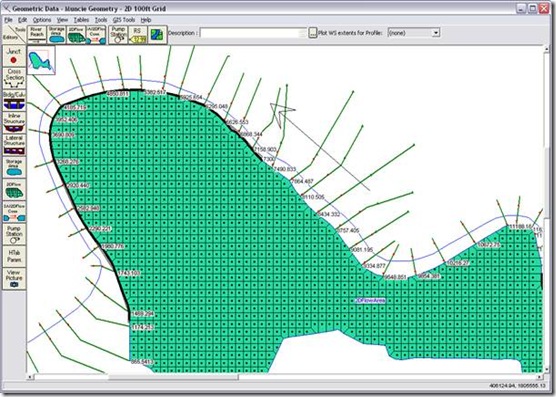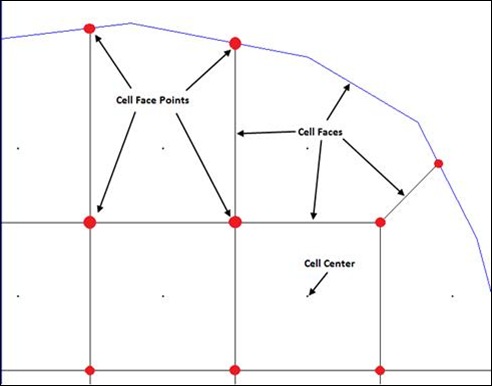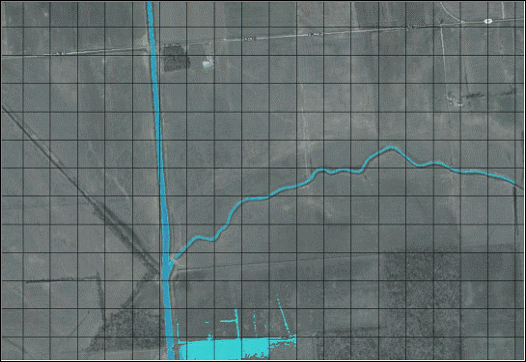
Multiple Opening Analysis
Did you know that if you have a bridge opening and one or more culverts at a single river crossing a Multiple Opening Analysis is required?
UPDATE. HEC has asked that I no longer distribute HEC-RAS 4.2 with 2D Alpha. Their purpose for releasing this alpha version is to get constructive feedback so that they can improve its functionality and efficiency; and to minimize bugs before the offical beta release-not to be critically compared to other established 2D software packages…yet. So far, they have received no comments from anyone I have distributed the software to, which is very disappointing. Please keep your eye out for the official beta release, which is due out early next calendar year some time. You will be very impressed with its capabilities! In the meantime, if you have been given a copy of the alpha version of RAS2D, please take a brief moment and provide some comments and/or suggestions to HEC. User feedback is very important to their product development.
Sorry for any inconvenience. Chris @RASModel
ANOTHER UPDATE. The release of RAS2D beta is now projected to be end of February, 2014. I’ll post updates as I get them. Chris @RASModel
UPDATE #3. RAS2D will now be released as a new feature in HEC-RAS Version 5.0. There will be no official release of RAS2D under version 4.2. The Beta version of HEC-RAS 5.0 is due to be released in the March/April 2014 timeframe.
UPDATE #4. Latest indications are Version 5.0 beta will be released at the end of April, and the full version will be released at the end of the summer.
UPDATE #5 (as of May 11, 2014). Latest indications are Version 5.0 beta will be released in 2 to 3 weeks, putting it at the end of May, early June time frame.
UPDATE #6 (as of May 23, 2014). Version 5.0 beta is out!!! Go get it at http://hecrasmodel.blogspot.com/2014/06/update-to-hec-ras-50-beta.html
I’ve gotten a chance to play around with the alpha version of HEC-RAS 4.2 and check out the program’s new two-dimensional (2D) modeling capabilities. From what I’ve seen this will be a really useful feature! Being the alpha version of RAS2D there are still features in development, and is bound to be a bit “buggy”, but it is definitely worth looking forward to. What is it?
The new build of RAS will allow users to connect 2D flow elements to a 1D river system. You will now be able to model overland areas as dynamic, 2 dimensional grids, rather than level pool storage areas. The figure below shows the 1D and 2D features together in the geometry window. 
How does it work? The 2D mesh and the 1D system are tightly coupled during an unsteady simulation. This means that water surface elevation is calculated at each XS and each grid cell for every timestep, allowing direct feedback at the connections. 2D flow areas can be linked to the 1D system the same way storage areas are. The Figure shown below is a schematic of how the 2D mesh is built, and how RAS routes flow from cell to cell.  Upon creating the 2D mesh, you need to load a digital terrain file (.flt format). Both the pre- and post-processing steps for the 2D flow area are done through RAS Mapper.
Upon creating the 2D mesh, you need to load a digital terrain file (.flt format). Both the pre- and post-processing steps for the 2D flow area are done through RAS Mapper.
Computationally, RAS will allow the user to choose between using 2D Diffusion Wave equations (default), or the full 2D Dynamic Wave equations. Most flood applications should be adequately modeled using the Diffusion Wave equations. What are the advantages?Besides computing in 2-dimensions, the main advantage is the program’s ability to maintain computational robustness while preserving the details of the underlying terrain. Smaller features (i.e. drainage ditches) that run through large cells will be captured in the hydraulic properties of the cell faces. Therefore, these features will be preserved and accounted for both computationally and visually, even though they are smaller than the grid cell size, as demonstrated in the RAS2D output displayed in the figure below. Traditionally, many 2D models require cell size to be consistent with the size of the features to be included. Not the case with RAS2D.  Additional advantages include:
Additional advantages include:
Comments
Chris G.
on April 30, 2013Nice summary Aaron!
JEM
on May 2, 2013Cant wait!!
calibration
on May 3, 2013My cousin recommended this blog and she was totally right keep up the fantastic work!
Temperature calibration
Chris G.
on May 3, 2013Thanks!
Anonymous
on May 9, 2013G Day,
How we can download RAS2D?
Cheers,
Anonymous
on May 12, 2013which method is used to solve the equations of motion?
Chris G.
on May 13, 2013Keep your eye out for the beta release of HEC-RAS with RAS2D. It is due out by the end of the calendar year. You'll be able to download it from http://www.hec.usace.army.mil. Right now, only the alpha version is out with limited release.
Chris G.
on May 13, 2013For 2-dimensional flow areas, RAS uses an implicit finite volume solution of the 2-d Diffusive Wave form of the St. Venant equations by default, with the option to run the full dynamic form if so desired. HEC feels that for most applications, the diffusive wave form will be adequate.
Anonymous
on May 22, 2013Is it possible to get hold of the Alpha version?
Chris G.
on May 22, 2013HEC wants to know who is testing the Alpha version. If you send me your contact info, and some information about the types of projects you'll be testing it for, I can get you an Alpha version. Just realize it is not for commercial use and HEC expects to get feedback from its Alpha testers. cgoodell@westconsultants.com
Muhammad Ehtsham
on September 12, 2013kindly give me download link for ras2d I want to test it for my own learning
Stéphane GAIJI
on September 24, 2013In 2011, I had an experience with HECRAS and GIS to see if it was possible to model such scenarios. I had built a network with full square mesh connected by overflow. As I am French, the note is written in … French! Sorry. I can send it to you if you are interested especially in patterns and images.
Chris G.
on October 1, 2013Please include your email address and I'll send you instructions.
Chris G.
on October 1, 2013Hi Stephane-
That would be great. Thanks. If you format it like the blog posts, I'll included it as it's own blog post.
Stéphane GAIJI
on October 1, 2013I have put the file there :
https://www.dropbox.com/s/6jk9r82amx9ln3i/Les%20mod%C3%A8les%20hydrauliques%20%C3%A0%20mailles%20-v2.doc
Stéphane GAIJI
on October 1, 2013I'm also interrested in testing the new version …
Anonymous
on October 14, 2013Thank you for the summary, Chris. Will RAS-2D be able to evaluate culvert systems along with river systems?
Chris G.
on October 15, 2013RAS2D will handle culverts the same way it has in the past, to my knowledge. I'm not sure what you mean by culvert systems, but you can have culverts in streams, in lateral structures, and in storage area connections. Those methods for modeling culverts should all still be available to you in RAS2D.
Anonymous
on October 17, 2013Chris, my apologies. I wrote in haste. I meant storm drain networks. I was curious if RAS2D will be able to model floodplain areas that also have underground SD.
Suresh Sharma
on December 3, 2013When Hec-Ras 2D is available?. Is it going to release soon?
Chris G.
on December 3, 2013The latest info I have is that the beta version will be released to the public around the end of the calendar year. Please stay tuned
Suresh Sharma
on December 3, 2013when 2-d will be available? is this 2 -D version available now?
Chris G.
on December 23, 2013Latest intel says end of January for the beta release…
Anonymous
on January 10, 2014*Fingers crossed for end of January!*
By the way Chris, where do you get your intel from? This is the only site I am able to find with any information pertaining to RAS2D..
Chris G.
on January 10, 2014Better uncross those fingers:). Looks like the latest projection is end of February now. My intel comes directly from the HEC-RAS development team at HEC. They're a great group of guys and are always forthcoming with me about the latest and greatest RAS news.
Anonymous
on January 10, 2014Ah shucks. Better to cross my fingers than hold my breath I suppose.
Chris G.
on January 10, 2014Haha. Definately. Hang in there. We'll all be 2D modeling in no time…
AniD
on March 15, 2014Its middle of March, any update yet regarding release of Version 5.0
Chris G.
on March 27, 2014Latest indications are Version 5.0 beta will be released at the end of April, and the full version will be released at the end of the summer.
Anonymous
on April 9, 2014Are you aware if we can use this version to complete a 2D analysis of flow in a river? Are 1D cross sections needed to run the 2D part of the model?
Chris G.
on April 9, 2014Yes, when version 5.0 comes out towards the end of this month, you'll be able to do a 2D analysis of flow in a river. I think (though I'm not sure) you'll still need some cross sections. You can always set up "dummy" cross sections to fulfill this need.
Anonymous
on April 10, 2014Thank you for the reply. I am interested in Version 5.0's capability to model the change in velocity vectors and shear stress around flow deflection structures. Does 5.0 allow for different sized cells (smaller near structures, larger cells away) and how many cells can be allowed? I'm trying to figure out how to create an .flt file out of Civil 3D and am interested in what is 5.0's capacity for cell size and number so I know how big a surface I can make in 3D.
Anonymous
on April 14, 2014In the Alpha version (August 2013) you needed to have dummy cross-sections, but I was told they were thinking about removing that requirement as some point.
Chris G.
on April 14, 2014Hope that is the case.
Anonymous
on May 6, 2014any updates for the release date of ras 5.0 beta? thx
Chris G.
on May 11, 2014Version 5.0 will allow you to have different sized (and different shaped) cells to get more resolution around areas of interest. I'm not sure what the cell size/number limitations will be in 5.0, but I'm sure you won't have a problem for most applications.
Chris G.
on May 11, 2014latest out of HEC is 2 to 3 weeks from now. Expect end of June.
Assaye Melaku Gabre
on July 13, 2014This comment has been removed by the author.
Chris G.
on July 13, 2014Please follow the directions on this post to get the beta version of HEC-RAS 5.0. http://hecrasmodel.blogspot.com/2014/06/update-to-hec-ras-50-beta.html
Assaye Melaku Gabre
on July 22, 2014This comment has been removed by the author.
Anonymous
on August 4, 2014Great, I will try it. I hope the engine can be run from command prompt.
Angana Borah
on June 13, 2018I have successfully run the HEC RAS model for a particular stretch of river and its working fine with no instability or errors, but the propagation seems to take place only in the north bank of the river whereas there is a major tributary on the south bank but flow does not take place. please anyone help me out on what may be wrong. I have added 3 no.s of 2D flow areas on both sides of the river by lateral structures and given the same specifications. Thanking in advance.
Add Your Comment